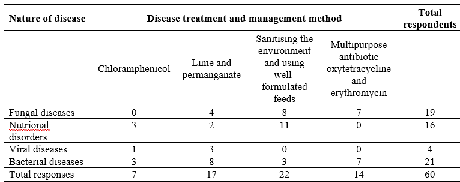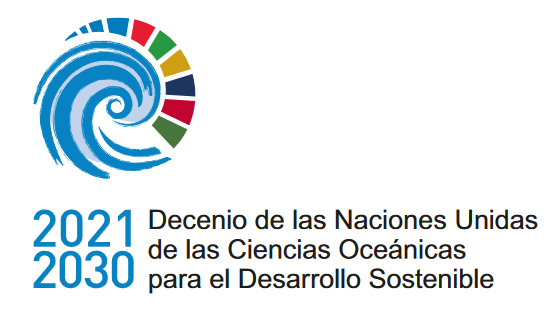Protocolos de bioseguridad y gestión de la salud de los peces en los criaderos de Kenia: una clave para la producción sostenible de semillas de peces de calidad
DOI:
https://doi.org/10.47193/mafis.3812025010102Palabras clave:
Salud piscícola, medidas de bioseguridad, operaciones de criaderos de peces, manejo de enfermedades de peces, prácticas de salud en acuiculturaResumen
La acuicultura se está convirtiendo cada vez más en una actividad agrícola vital a nivel mundial para satisfacer la demanda exponencialmente alta de pescado y reducir la presión sobre la pesca de captura mundial. En Kenia, el crecimiento de la acuicultura ha generado preocupaciones por el suministro de semillas de peces de calidad, y los agricultores a menudo informan de casos relacionados con la adulteración de alevines y el etiquetado incorrecto en los que renacuajos de rana se empaquetan y suministran como alevines de Clarias gariepinus, y alevines de Oreochromis niloticus de sexos mezclados se venden falsamente a los piscicultores como tilapia del Nilo monosexo de sexo invertido. Este estudio tiene como objetivo identificar estrategias para mejorar la producción de semilla de peces de calidad en el país. Los datos primarios se recopilaron mediante cuestionarios y entrevistas utilizando la caja de herramientas de Kobo. Los encuestados se seleccionaron mediante muestreo intencional y aleatorio. El análisis utilizó el software SPSS. Los hallazgos mostraron una dependencia moderada de oficinas de notificación específicas para casos de enfermedades de peces y una variación significativa en los tipos de enfermedades y medidas de bioseguridad. Los operadores de los criaderos participaron más en las prácticas de tratamiento y gestión de enfermedades de los peces que en la notificación de enfermedades. No se encontraron diferencias significativas entre el tratamiento y el manejo de enfermedades, el tipo de enfermedades encontradas en los peces de criadero y la naturaleza de los alevines producidos (p > 0,05). Sin embargo, hubo una diferencia significativa entre la fuente de reproductores, las medidas de bioseguridad, el tipo de enfermedades encontradas en los peces y la Oficina de Notificación de Casos de Enfermedades (p < 0,05). No se encontraron diferencias significativas entre las medidas de bioseguridad y el período en que se estableció el criadero (p > 0,05). La falta de apoyo financiero, una fuerza laboral sin experiencia y la falta de conocimiento en la identificación y tratamiento de enfermedades de peces fueron los principales problemas que afectaron la sostenibilidad de las operaciones de los criaderos en el país. Los formuladores de políticas de acuicultura deben establecer apoyo financiero para los criaderos, implementar capacitación sobre manejo de enfermedades, promover colaboraciones de investigación para la vigilancia de enfermedades e incentivar medidas de bioseguridad entre los administradores de los criaderos y los piscicultores para mejorar la sostenibilidad de la acuicultura en Kenia. Se deberían realizar más investigaciones para explorar métodos de tratamiento y sostenibilidad a largo plazo para mitigar los riesgos de enfermedades.
Descargas
Referencias
Abwao J, Jung’a J, Barasa JE, Kyule D, Opiyo M, Awuor JF, Ogello E, Munguti JM, Keya GA. 2023. Selective breeding of Nile tilapia, Oreochromis niloticus: a strategy for increased genetic diversity and sustainable development of aquaculture in Kenya. J Appl Aquacult. 35 (2): 237-256. DOI: https://doi.org/10.1080/10454438.2021.1958728
Ahmed N, Thompson S, Glaser M. 2019. Global aquaculture productivity, environmental sustainability, and climate change adaptability. Environ Manage. 63 (2): 159-172. DOI: https://doi.org/10.1007/S00267-018-1117-3
Akoll P, Mwanja WW. 2012. Fish health status, research and management in East Africa: past and present. Afr J Aquat Sci. 37 (2): 117-129. DOI: https://doi.org/10.2989/16085914.2012.694628
Arumugam M, Jayaraman S, Sridhar A, Venkatasamy V, Brown PB, Abdul Kari Z, Tellez-Isaias G, Ramasamy T. 2023. Recent advances in tilapia production for sustainable developments in Indian aquaculture and its economic benefits. Fishes. 8 (4): 176. DOI: https://doi.org/10.3390/fishes8040176
Assefa A, Abunna F. 2018. Maintenance of fish health in aquaculture: review of epidemiological approaches for prevention and control of infectious disease of fish. Vet Med Int. 2018: 5432487. DOI: https://doi.org/10.1155/2018/5432497
Aswathy N, Imelda J. 2018. Economic viability of cage farming of Asian seabass in the coastal waters of Kerala. [accessed Mar 2024]. https://eprints.cmfri.org.in/13247/.
Bhatnagar A, Budhalia K. 2023. Fish epidermal mucus analytes with reference to physiological threats: non- intrusive approach to evaluate health status of carp fishes. Int Aquat Res. 15 (3): 205-218. DOI: https://doi.org/10.22034/iar.2023.1983914.1426
Brummett RE, Williams MJ. 2000. The evolution of aquaculture in African rural and economic development. Ecol Econ. 33 (2): 193-203. DOI: https://doi.org/10.1016/S0921-8009(99)00142-1
Chaudhari AK, Kumar Ail SS, Misra CK, De HK, Rathod R, Bhatt JH, Swain SK, Vigyan Kendra K. 2023. Status of freshwater aquaculture in Gujarat: a trend analysis and potential. Int J Bio-Resource Stress Manage. 14: 59-67. DOI: https://doi.org/10.23910/1.2023.3284a
Chaudhary P, Kumar Yadav P, Kumar Jha D. 2021. Status of fish hatchery and nursery management in Dhanusha, Nepal. Mal Anim Husbandry J. 1 (1): 14-25. DOI: https://doi.org/10.26480/mahj.01.2021.14.25
Dadar M, Dhama K, Vakharia VN, Hoseinifar SH, Karthik K, Tiwari R, Khandia R, Munjal A, Salgado-Miranda C, Joshi SK. 2017. Advances in aquaculture vaccines against fish pathogens: global status and current trends. Rev Fish Sci Aquacult. 25 (3): 184-217. DOI: https://doi.org/10.1080/23308249.2016.1261277
Dewanggani AP, Sari LA, Sari PDW, Nindarwi DD, Arsad S. 2021. The effect of feed management technology (life and pellet feed) on the maintenance of mutiara catfish (Clarias sp.) in freshwater cultivation. IOP Conf Ser Earth Environ Sci. 718: 012017. DOI: https://doi.org/10.1088/1755-1315/718/1/012017
Genschick S, Mekkawy W, Rossignoli C, Benzie JAH. 2021. Growth performance of three strains of Nile tilapia (Oreochromis niloticus) on four different feeds in Western and Central Kenya. Aquacult Reports. 20: 100701. DOI: https://doi.org/10.1016/j.aqrep.2021.100701
Harikrishnan M, Syanya FJ, Khanna ARN, Mumina P, Mathia WM. 2024. Ecological implications of unintentional aquaculture escapees: an overview of risks, remediation strategies and knowledge gaps in the aquaculture sector of India and riparian East African countries. Mar Fish Sci. 37 (4). DOI: https://doi.org/10.47193/mafis.3742024010709
Henriksson PJG, Rico A, Troell M, Klinger DH, Buschmann AH, Saksida S, Chadag MV, Zhang W. 2018. Unpacking factors influencing antimicrobial use in global aquaculture and their implication for management: a review from a systems perspective. Sustainability Sci. 13 (4): 1105-1120. DOI: https://doi.org/10.1007/S11625-017-0511-8
Hossain S, Shefat T, Karim MA. 2018. Nutritional diseases of fish in aquaculture and their management: a review. Acta Sci Pharm Sci. 2: 2581-5423.
Jansen MD, Dong HT, Mohan CV. 2019. Tilapia lake virus: a threat to the global tilapia industry? Rev Aquacult. 11 (3): 725-739. DOI: https://doi.org/10.1111/raq.12254
Jayasankar P. 2018. Present status of freshwater aquaculture in India-a review. Indian J Fish. 65 (4): 157-165. DOI: https://doi.org/10.21077/ijf.2018.65.4.81300-20
Jia B, St-Hilaire S, Singh K, Gardner IA. 2017. Biosecurity knowledge, attitudes and practices of farmers culturing yellow catfish (Pelteobagrus fulvidraco) in Guangdong and Zhejiang provinces, China. Aquaculture. 471: 146-156. DOI: https://doi.org/10.1016/j.aquaculture.2017.01.016
Jiang Q, Huang S, Du Y, Xiao J, Wang M, Wang X, Shi W, Zhao Y. 2023. Quality improvement of tilapia fillets by light salting during repeated freezing-thawing: contribution of structural rearrangement and molecular interactions. Food Chem. 406: 135097. DOI: https://doi.org/10.1016/j.foodchem.2022.135097
Kaliba AR, Ngugi CC, MacKambo J, Quagrainie KK. 2007. Economic profitability of Nile tilapia (Oreochromis niloticus L.) production in Kenya. Aquacult Res. 38 (11): 1129-1136. DOI: https://doi.org/10.1111/j.1365-2109.2007.01772.x
Kaminski AM, Pounds AM, McAdam B, Bostock J, Opiyo MA, Little DC. 2024. Growing smaller fish for inclusive markets? Increasing stocking density and shortening the production cycle of Nile tilapia in cages on Lake Victoria. Aquaculture. 581: 740319. DOI: https://doi.org/10.1016/j.aquaculture.2023.740319
Kumar R, Gokulakrishnan M, Debbarma J, Damle DK. 2022. Advances in captive breeding and seed rearing of striped murrel Channa striata, a high value food fish of Asia. Anim Reprod Sci. 238: 106957. DOI: https://doi.org/10.1016/j.anireprosci.2022.106957
Li N, Wang R, Zhang J, Fu Z, Zhang XS. 2009. Developing a knowledge-based early warning system for fish disease/health via water quality management. Expert Syst Appl. 36 (3): 6500-6511. DOI: https://doi.org/10.1016/j.eswa.2008.07.065
Liti D, Cherop L, Munguti J, Chhorn L. 2005. Growth and economic performance of Nile tilapia (Oreochromis niloticus L.) fed on two formulated diets and two locally available feeds in fertilized ponds. Aquacult Res. 36 (8): 746-752. DOI: https://doi.org/10.1111/j.1365-2109.2005.01265.x
Mehrim AI, Refaey MM. 2023. An overview of the implication of climate change on fish farming in Egypt. Sustainability. 15 (2): 1679. DOI: https://doi.org/10.3390/su15021679
Miller JW, Atanda T. 2011. The rise of peri-urban aquaculture in Nigeria. Int J Agricult Sustainability. 9 (1): 274-281. DOI: https://doi.org/10.3763/ijas.2010.0569
Mohanty B, Vivekanandan E, Mohanty S, Mahanty A, Trivedi R, Tripathy M, Sahu J. 2017. The impact of climate change on marine and inland fisheries and aquaculture in India. In: Pillips BF, Pérez-Ramírez M, editors. Climate change impacts on fisheries and aquaculture. Wiley Online Library. p. 569-601. DOI: https://doi.org/10.1002/9781119154051.ch17
Mugimba KK, Chengula AA, Wamala S, Mwega ED, Kasanga CJ, Byarugaba DK, Mdegela RH, Tal S, Bornstein B, Dishon A, et al. 2018. Detection of tilapia lake virus (TiLV) infection by PCR in farmed and wild Nile tilapia (Oreochromis niloticus) from Lake Victoria. J Fish Dis. 41 (8): 1181-1189. DOI: https://doi.org/10.1111/jfd.12790
Munguti JM, Kim JD, Ogello EO. 2014. An overview of Kenyan aquaculture: current status, challenges, and opportunities for future development. Fish Aquat Sci. 17 (1): 1-11. DOI: https://doi.org/10.5657/fas.2014.0001
Munguti JM, Mboya JB, Iteba JO, Kirimi JG, Obiero KO, Kyule DN, Opiyo MA, Njonge FK, Jimmy Mboya CB, Marine K. 2024. Status and prospects of the ornamental fish industry in Kenya. Aquacult Fish Fish. 4 (3): e172. DOI: https://doi.org/10.1002/aff2.172
Mutyaba JL, Ngigi MW, Ayuya OI, Livingstone Mutyaba J, Ingasia Ayuya O. 2024. Determinants of knowledge, attitude and perception towards cage fish farming technologies among smallholder farmers in Uganda. Cogent Food Agric. 10 (1): 2313252. DOI: https://doi.org/10.1080/23311932.2024.2313252
Njiru JM, Aura CM, Okechi JK. 2019. Cage fish culture in Lake Victoria: a boon or a disaster in waiting? Fish Manage Ecol. 26 (5): 426-434. DOI: https://doi.org/10.1111/fme.12283
Novoslavskij A, Terentjeva M, Eizenberga I, Valciņa O, Bartkevičs V, Bērziņš A. 2016. Major foodborne pathogens in fish and fish products: a review. An Microbiol. 66 (1): 1-15. DOI: https://doi.org/10.1007/S13213-015-1102-5
Opiyo MA, Marijani E, Muendo P, Odede R, Leschen W, Charo-Karisa H. 2018. A review of aquaculture production and health management practices of farmed fish in Kenya. Int J Vet Sci Med. 6 (2): 141-148. DOI: https://doi.org/10.1016/j.ijvsm.2018.07.001
Opiyo MA, Obiero KO, Abwao J, Awuor FJ, Kyule D, Munguti J. 2021. Comparative growth performance of genetically male, sex-reversed, and mixed-sex nile tilapia (Oreochromis niloticus) reared in earthen ponds in sagana, Kenya. Aquacult Stud. 21 (1): 23-30. DOI: https://doi.org/10.4194/2618-6381-V21_1_03
Otieno NE. 2019. Economic impact of predatory piscivorous birds on small-scale aquaculture farms in Kenya. Aquacult Rep. 15: 100220. DOI: https://doi.org/10.1016/j.aqrep.2019.100220
Otieno NE, Wasonga DV, Imboko D. 2021. Pond-adjacent grass height and pond proximity to water influence predation risk of pond fish by amphibians in small fish ponds of Kakamega County, western Kenya. Hydrobiologia. 848 (8): 1795-1809. DOI: https://doi.org/10.1007/S10750-021-04551-8
Otoh AJ, Ekanem IE, Okoko AC, Asangusung PS, George UU. 2024. Comparative study of inducing broodstock with natural and artificial hormones on reproductive performances of Clarias gariepinus. Asian J Fish Aquat Res. 26 (3): 31-38. DOI: https://doi.org/10.9734/ajfar/2024/v26i3744
Pathak SC, Ghosh SK, Palanisamy K. 2000. The use of chemicals in aquaculture in India. In: Arthur JR, Lavilla-Pitogo CR, Subasinghe RP, editors. Use of chemicals in aquaculture in Asia. Tigbauan: Southeast Asian Fisheries Development Center, Aquaculture Department. p. 87-112. http://hdl.handle.net/10862/604.
Prieto-Carolino A, Pilapil-Anasco C, Mediodia HJP, Gelvezon RPL, Gabunada FM. 2018. Prospects of community-based co-management of Philippine abalone fishery. Ocean Coast Manage. 163: 185-191. DOI: https://doi.org/10.1016/j.ocecoaman.2018.06.006
Quevedo Cascante M, Acosta García N, Fold N. 2022. The role of external forces in the adoption of aquaculture innovations: an ex-ante case study of fish farming in Colombia’s southern Amazonian region. Technol Forecasting Social Change. 174: 121185. DOI: https://doi.org/10.1016/j.techfore.2021.121185
Rahman ML, Shahjahan M, Ahmed N. 2021. Tilapia farming in Bangladesh: adaptation to climate change. Sustainability. 13 (14): 7657. DOI: https://doi.org/10.3390/su13147657
Research and Markets. 2023. Aquaculture global market report 2023. Research and Markets. https://www.researchandmarkets.com/reports/5766638/aquaculture-global-market-report.
Robledo D, Ogwang J, Byakora E, Schulze JN, Benda KK, Fraslin C, Salisbury S, Solimo M, Mayega JF, Peter B, et al. 2024. Genetic diversity and population structure of farmed and wild Nile tilapia (Oreochromis niloticus) in Uganda: the potential for aquaculture selection and breeding programs. Genomics. 116 (1): 110781. DOI: https://doi.org/10.1016/j.ygeno.2024.110781
Roh HJ, Park J, Kim A, Kim N, Lee Y, Kim BS, Vijayan J, Lee MK, Park CIl, Kim DH. 2020. Overfeeding-induced obesity could cause potential immuno-physiological disorders in rainbow trout (Oncorhynchus mykiss). Animals. 10 (9): 1-15. DOI: https://doi.org/10.3390/ani10091499
Santiago CB, Laron MA. 2002. Growth and fry production of Nile tilapia, Oreochromis niloticus (L.), on different feeding schedules. Aquacult Res. 33 (2): 129-136. DOI: https://doi.org/10.1046/J.1365-2109.2002.00664.x
Singh AK. 2021. State of aquatic invasive species in tropical India: an overview. Aquat Ecosyst Health Manage. 24 (2): 13-23. DOI: https://doi.org/10.14321/aehm.024.02.05
Syanya FJ, Harikrishnan M, Simiyu NN, Khanna ARN, Litabas JA, Mathia WM. 2024a. Aquaculture: a hidden goldmine for the rural poor -a cost-benefit analysis of fish farming for sustainable development and food security in Vihiga County, Kenya. Bus Strategy Dev. 7 (2): e348. DOI: https://doi.org/10.1002/bsd2.348
Syanya FJ, Litabas JA, Mathia WM, Ntakirutimana R. 2023a. Nutritional fish diseases in aquaculture: a human health hazard or mythical theory: an overview. Eur J Nutr Food Saf. 15 (8): 41-58. DOI: https://doi.org/10.9734/ejnfs/2023/v15i81326
Syanya FJ, Mathia WM. 2023. Status of fish health and biosecurity management systems in Kenya’s aquaculture production units. A case of government authenticated fish hatcheries. Research Square. DOI: https://doi.org/10.21203/rs.3.rs-2430657/v1
Syanya FJ, Mathia WM, Harikrishnan M. 2023b. Quality and safety concerns of farmed tilapia fish during freezing and frozen storage: review. Asian Food Sci J. 22 (6): 40-58. DOI: https://doi.org/10.9734/afsj/2023/v22i6641
Syanya FJ, Mathia WM, Mumina P, Litabas JA, Sifuna C. 2024b. Aqua perspectives: stakeholder attitudes and perceptions in live fish transportation practices within the Kenyan fisheries sector. Mar Fish Sci. 37 (2): 317-335. DOI: https://doi.org/10.47193/mafis.3722024010507
Syanya FJ, Winam ZO, Mathia WM. 2023c. Vanishing splendor: a comprehensive review of the decline in the original fish fauna of Lake Victoria. Mar Fish Sci. 37 (1): 209-231. DOI: https://doi.org/10.47193/mafis.3712024010107
Uppanunchai A, Apirumanekul C, Lebel L. 2015. Planning for production of freshwater fish fry in a variable climate in northern Thailand. Environ Manage. 56 (4): 859-873. DOI: https://doi.org/10.1007/S00267-015-0547-4
Watanabe WO, Losordo TM, Fitzsimmons K, Hanley F. 2002. Tilapia production systems in the Americas: technological advances, trends, and challenges. Rev Fish Sci. 10 (3-4): 465-498. DOI: https://doi.org/10.1080/20026491051758
WorldFish 2024. WorldFish 2023 Annual Report. Penang: WorldFish. https://digitalarchive.worldfishcenter.org/handle/20.500.12348/5974.
Yongo E, Zhang P, Mutethya E, Zhao T, Guo Z. 2023. The invasion of tilapia in South China freshwater systems: a review. Lakes Reserv Res Manage. 28 (1): e12429. DOI: https://doi.org/10.1111/lre.12429
Yuan Y, Yuan Y, Dai Y, Gong Y. 2017. Economic profitability of tilapia farming in China. Aquacult Int. 25 (3): 1253-1264. DOI: https://doi.org/10.1007/S10499-017-0111-8
Zongli Z, Yanan Z, Feifan L, Hui Y, Yongming Y, Xinhua Y. 2017. Economic efficiency of small-scale tilapia farms in Guangxi, China. Aquacult Econ Manage. 21 (2): 283-294. DOI: https://doi.org/10.1080/13657305.2016.1180644

Descargas
Publicado
Número
Sección
Licencia
Derechos de autor 2024 Fredrick Juma Syanya, Harikrishnan Mahadevan, A. R. Nikhila Khanna, Wilson Munala Mathia, Paul Mumina, Joel Anyula Litabas, Caleb Sifuna

Esta obra está bajo una licencia internacional Creative Commons Atribución-NoComercial-CompartirIgual 4.0.
Los autores de los artículos publicados en Marine and Fishery Sciences conservan los derechos de autor de sus artículos, a excepción de las imágenes de terceros y otros materiales añadidos por Marine and Fishery Sciences, que están sujetos a los derechos de autor de sus respectivos propietarios. Por lo tanto, los autores son libres de difundir y volver a publicar sus artículos, sujeto a los requisitos de los propietarios de derechos de autor de terceros y sujeto a que la publicación original sea completamente citada. Los visitantes también pueden descargar y reenviar artículos sujetos a los requisitos de citas. La capacidad de copiar, descargar, reenviar o distribuir cualquier material siempre está sujeta a los avisos de derechos de autor que se muestran. Los avisos de copyright deben mostrarse de manera prominente y no pueden borrarse, eliminarse u ocultarse, total o parcialmente. El autoalmacenamiento en servidores y repositorios de preimpresión está permitido para todas las versiones.
Esta revista ofrece a los autores una política de acceso abierto. Los usuarios pueden leer, descargar, copiar, distribuir, imprimir, buscar o vincular los textos completos de los artículos, o usarlos para cualquier otro propósito legal dentro de la licencia Creative Commons 4.0 (BY-NC-SA), sin solicitar permiso previo del editor o del autor. Esto está de acuerdo con la definición BOAI de acceso abierto.


 https://orcid.org/0009-0008-4226-1723
https://orcid.org/0009-0008-4226-1723





















